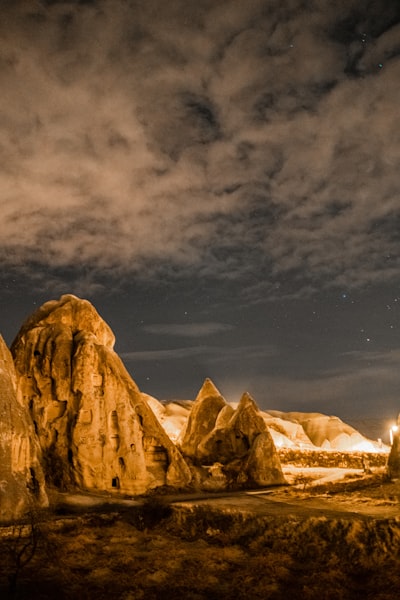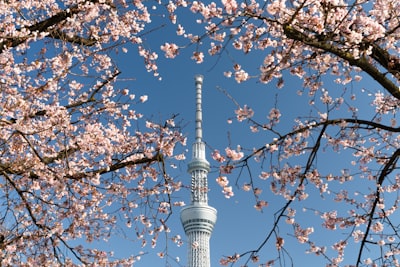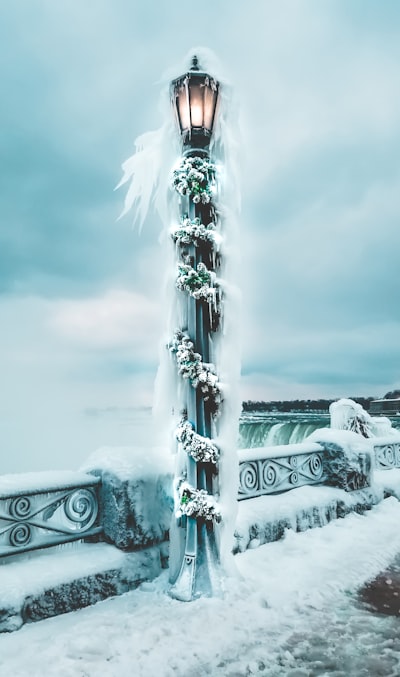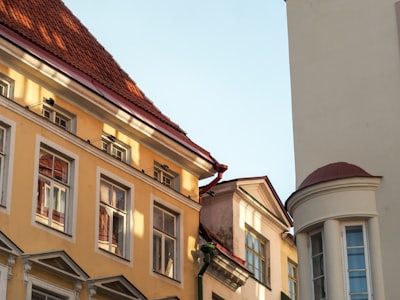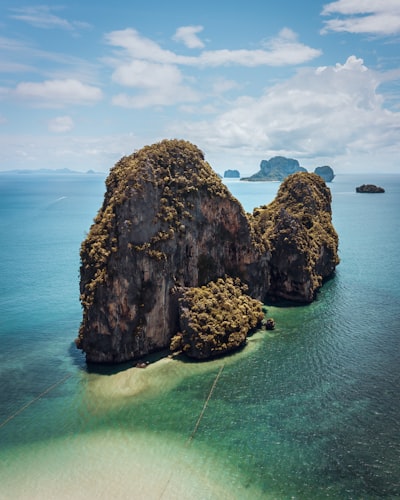Hagia Sophia Hagia Sophia is the crown jewel of Istanbul and one of the most iconic landmarks in the world. This magnificent Byzantine cathedral-turned-mosque-turned-museum is a true architectural masterpiece. Admire the stunning Byzantine mosaics, the towering domes, and the intricate marble work that adorn the interior. Climb to the upper galleries for breathtaking views over the main hall. Blue Mosque Just a short walk from Hagia Sophia, the Blue Mosque is another Istanbul icon. This 17th-century mosque is renowned for its beautiful blue İznik tiles that cover the interior walls. Marvel at the six slender minarets and the impressive central dome. Visitors can enter the mosque during non-prayer times, but be sure to dress modestly and remove your shoes. Topkapi Palace Topkapi Palace was the primary residence of the Ottoman sultans for almost 400 years. Explore the opulent courtyards, the lavish harem quarters, and the impressive treasury that houses the Spoonmaker's Diamond and other priceless artifacts. Don't miss the stunning views over the Bosphorus from the palace's terraces. Grand Bazaar No visit to Istanbul is complete without getting lost in the labyrinthine Grand Bazaar. This historic covered market is one of the largest and oldest in the world, with over 4,000 shops selling everything from carpets and ceramics to jewelry and spices. Haggle with the friendly vendors and soak up the vibrant atmosphere. Basilica Cistern Beneath the bustling streets of Istanbul lies the Basilica Cistern, a vast underground water reservoir dating back to the 6th century. Descend the marble staircase and marvel at the 336 columns that support the cavernous space. Keep an eye out for the famous Medusa heads that serve as column bases. Bosphorus Cruise Take a scenic cruise along the Bosphorus Strait, the waterway that separates Europe and Asia. Admire the stunning views of the city's historic skyline, the Bosphorus bridges, and the lavish Ottoman palaces that line the shores. Many tours also include stops at the Spice Bazaar and the Dolmabahçe Palace. Galata Tower Climb to the top of the iconic Galata Tower for panoramic views over the city. This medieval stone tower offers 360-degree vistas of the Golden Horn, the Bosphorus, and the historic neighborhoods of Istanbul. On a clear day, you can even see as far as the Princes' Islands. Süleymaniye Mosque Commissioned by the Ottoman Sultan Süleyman the Magnificent, this 16th-century mosque is one of the most impressive in Istanbul. Admire the elegant domes and minarets, the intricate calligraphy, and the stunning courtyard. Visitors can enter the mosque during non-prayer times. Dolmabahçe Palace Once the administrative center of the Ottoman Empire, Dolmabahçe Palace is a stunning example of 19th-century Ottoman architecture. Explore the opulent rooms and halls, adorned with Baccarat crystal chandeliers, Turkish carpets, and lavish furnishings. Don't miss the palace's beautiful gardens and the views over the Bosphorus.
The White Palace: The White Palace, also known as the "Potrang Karpo," is the administrative center of the Potala Palace. It houses the former living quarters of the Dalai Lamas, including the audience hall, the Dalai Lama's private chambers, and the Dalai Lama's throne room. The Red Palace: The Red Palace, or "Potrang Marpo," is the spiritual heart of the Potala Palace. It contains numerous chapels, shrines, and the tombs of past Dalai Lamas. Visitors can explore the intricate murals, thangka paintings, and the impressive collection of Buddhist artifacts. The Jokhang Temple: Located within the Potala Palace complex, the Jokhang Temple is considered the spiritual heart of Tibet. This UNESCO World Heritage Site is a stunning example of Tibetan Buddhist architecture, blending Nepalese, Tibetan, and Indian influences. Visitors can witness the daily rituals and practices of Tibetan Buddhists. The Lingkhor Kora: The Lingkhor Kora is a sacred pilgrimage route that circles the Potala Palace. Pilgrims and visitors can walk this path, which offers breathtaking views of the palace and the surrounding landscape. The Norbulingka: The Norbulingka, or "Jewel Park," was the summer palace of the Dalai Lamas. This serene and picturesque garden complex features ornate buildings, pavilions, and lush greenery, providing a peaceful respite from the hustle and bustle of the city. The Sera Monastery: Although not located within the Potala Palace complex, the Sera Monastery is a must-visit attraction for those interested in Tibetan Buddhism. This renowned monastery is known for its lively debates among the monks, which visitors can witness. The Drepung Monastery: Another important Tibetan Buddhist monastery, the Drepung Monastery was once the largest in the world, with over 10,000 monks. Visitors can explore the intricate architecture, murals, and the impressive collection of Buddhist artifacts. The Barkhor Street: The Barkhor Street is a bustling, circular street surrounding the Jokhang Temple. This vibrant market area offers a glimpse into the daily life of Tibetans, with vendors selling traditional handicrafts, religious items, and local delicacies. The Potala Palace Museum: The Potala Palace Museum showcases a vast collection of Tibetan artifacts, including thangka paintings, sculptures, and religious relics. Visitors can learn about the history and cultural significance of these treasures. The Kora Pilgrimage: Many visitors choose to undertake the Kora pilgrimage, a circumambulation of the Potala Palace. This spiritual practice is an important part of Tibetan Buddhist tradition and offers a unique opportunity to connect with the sacred landscape.
One of the must-see attractions within the Sagrada Familia complex is the Nativity Façade, which showcases Gaudí's intricate and detailed craftsmanship. This façade, dedicated to the birth of Jesus, is adorned with intricate sculptures and carvings that depict biblical scenes and symbolism. Another must-see attraction is the Passion Façade, which represents the suffering and crucifixion of Jesus. This façade, with its stark and angular design, is a powerful contrast to the ornate Nativity Façade and offers a unique perspective on Gaudí's artistic vision. The interior of the Sagrada Familia is equally impressive, with its soaring columns and vaulted ceilings that create a sense of awe and wonder. Visitors can explore the various chapels and altars, each with its own distinct architectural features and religious symbolism. One of the most popular attractions within the Sagrada Familia is the opportunity to climb to the top of the cathedral's towers. From the top, visitors can enjoy breathtaking views of Barcelona and the surrounding landscape, providing a unique perspective on this architectural masterpiece. In addition to the cathedral itself, the Sagrada Familia complex also includes a museum that showcases Gaudí's life and work, as well as the history and construction of the cathedral. Visitors can explore interactive exhibits and learn more about the intricate details and symbolism that are woven throughout the building. Overall, the Sagrada Familia is a must-see attraction for any traveler to Spain, offering a unique and unforgettable experience that showcases the genius of Antoni Gaudí and the rich cultural heritage of Barcelona.
The Nasrid Palaces are the crown jewel of the Alhambra, featuring intricate Islamic architecture, ornate carvings, and beautiful courtyards. Highlights include the Patio of the Lions, the Hall of the Abencerrages, and the Sala de los Reyes (Hall of the Kings). The Generalife is the summer palace of the Nasrid rulers, known for its lush gardens, serene fountains, and stunning views of the Alhambra. Visitors can stroll through the Patio de la Acequia, a tranquil water garden, and the Jardín de la Sultana, a beautiful terraced garden. The Alcazaba is the oldest part of the Alhambra, dating back to the 11th century. Visitors can climb to the top of the towers for panoramic views of Granada and the surrounding Sierra Nevada mountains. The Palace of Charles V is a Renaissance-style palace built in the 16th century, featuring a circular courtyard and impressive architecture that contrasts with the Moorish style of the rest of the Alhambra. The Alhambra Museum houses a collection of artifacts and exhibits that provide insight into the history and culture of the Alhambra, including ceramics, textiles, and manuscripts. The Baths of the Alhambra are a well-preserved example of Moorish bathing facilities, with intricate tile work and architectural details that offer a glimpse into the daily life of the Nasrid rulers. The Partal is a residential area of the Alhambra, featuring the remains of palatial structures and gardens that were once part of the complex. In addition to the Alhambra itself, visitors to Granada should also explore the historic Albaicín neighborhood, a UNESCO World Heritage site known for its winding streets, whitewashed houses, and stunning views of the Alhambra.
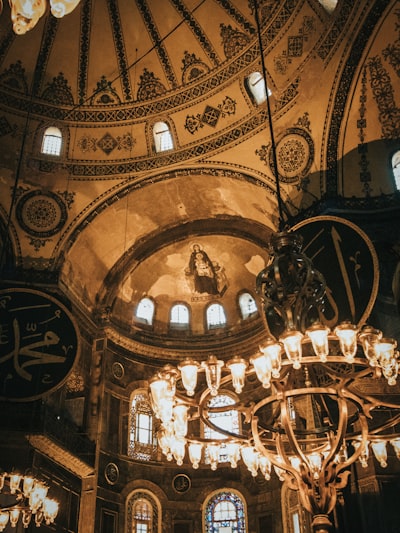


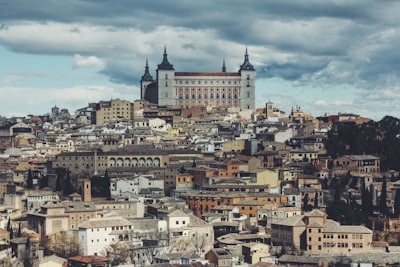
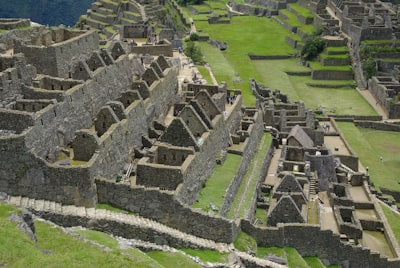
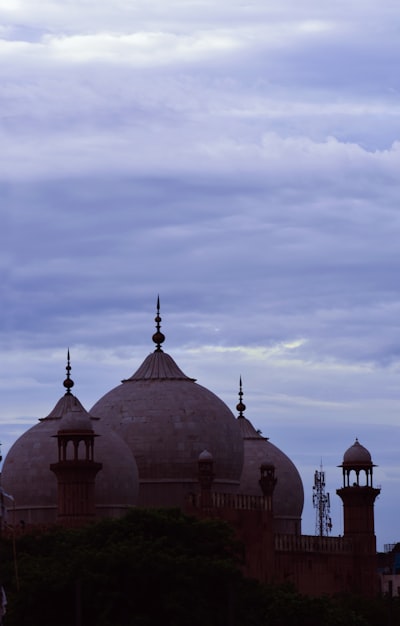
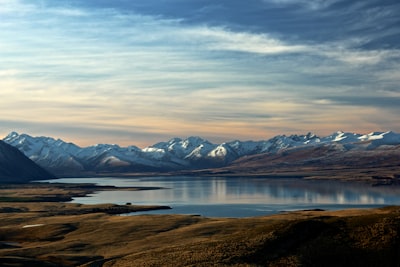
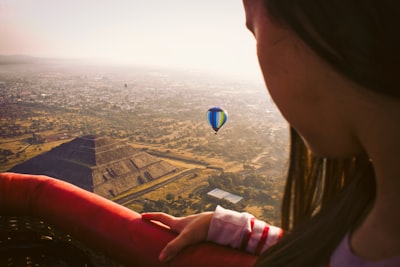
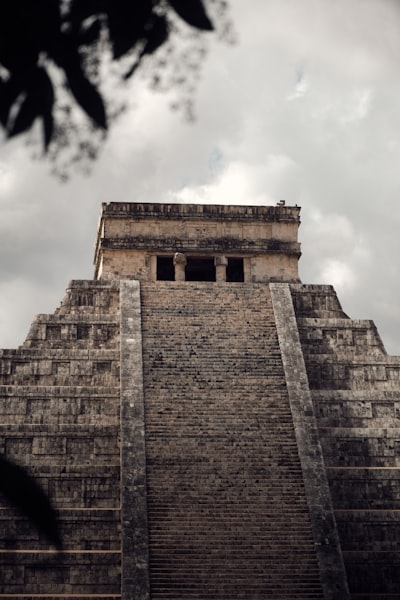
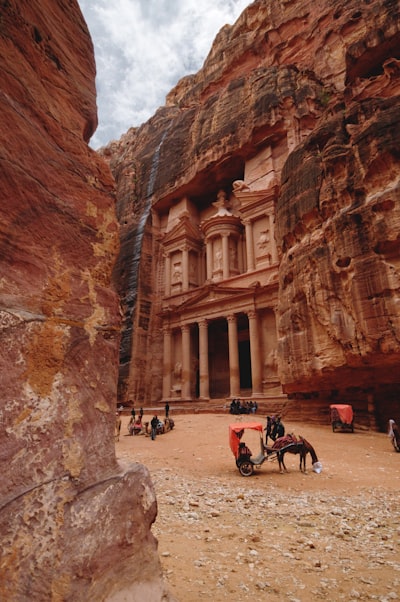
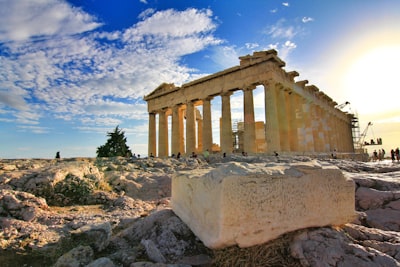
The Parthenon: The Parthenon is the most famous and iconic structure on the Acropolis. This magnificent temple, dedicated to the goddess Athena, is a stunning example of ancient Greek architecture and a symbol of the city of Athens. The Erechtheion: The Erechtheion is a temple on the Acropolis that is known for its intricate and beautiful caryatid statues, which are female figures used as columns to support the structure. The Propylaea: The Propylaea is the monumental gateway to the Acropolis, featuring a grand staircase and impressive columns that set the stage for the wonders that lie within. The Temple of Athena Nike: The Temple of Athena Nike is a small but exquisite temple dedicated to the goddess Athena, known for its intricate sculptural decorations. The Acropolis Museum: The Acropolis Museum is a state-of-the-art museum that houses an impressive collection of artifacts and exhibits related to the Acropolis and ancient Greek history. The Ancient Agora: The Ancient Agora was the commercial and social center of ancient Athens, and visitors can explore the ruins of this important historical site, including the well-preserved Temple of Hephaestus. The Odeon of Herodes Atticus: The Odeon of Herodes Atticus is a well-preserved ancient theater that still hosts performances and events, offering visitors a glimpse into the cultural life of ancient Athens. The Acropolis Museum Slopes: The Acropolis Museum Slopes are a series of terraces and gardens that offer stunning views of the Acropolis and the city of Athens, as well as additional archaeological exhibits. The Areopagus: The Areopagus is a rocky hill near the Acropolis that was the site of an ancient court and was also the location where the apostle Paul is said to have delivered his famous speech about the "unknown god." These are just a few of the must-see attractions at the Acropolis of Athens, a truly remarkable and awe-inspiring destination that offers a window into the rich history and culture of ancient Greece.

The Nasrid Palaces are the crown jewel of the Alhambra, featuring intricate Islamic architecture, ornate carvings, and beautiful courtyards. Highlights include the Patio of the Lions, the Hall of the Abencerrages, and the Sala de los Reyes (Hall of the Kings). The Generalife is the summer palace of the Nasrid rulers, known for its lush gardens, serene fountains, and stunning views of the Alhambra. Visitors can stroll through the Patio de la Acequia, a tranquil water garden, and the Jardín de la Sultana, a beautiful terraced garden. The Alcazaba is the oldest part of the Alhambra, dating back to the 11th century. Visitors can climb to the top of the towers for panoramic views of Granada and the surrounding Sierra Nevada mountains. The Palace of Charles V is a Renaissance-style palace built in the 16th century, featuring a circular courtyard and impressive architecture that contrasts with the Moorish style of the rest of the Alhambra. The Alhambra Museum houses a collection of artifacts and exhibits that provide insight into the history and culture of the Alhambra, including ceramics, textiles, and manuscripts. The Baths of the Alhambra are a well-preserved example of Moorish bathing facilities, with intricate tile work and architectural details that offer a glimpse into the daily life of the Nasrid rulers. The Partal is a residential area of the Alhambra, featuring the remains of palatial structures and gardens that were once part of the complex. In addition to the Alhambra itself, visitors to Granada should also explore the historic Albaicín neighborhood, a UNESCO World Heritage site known for its winding streets, whitewashed houses, and stunning views of the Alhambra.
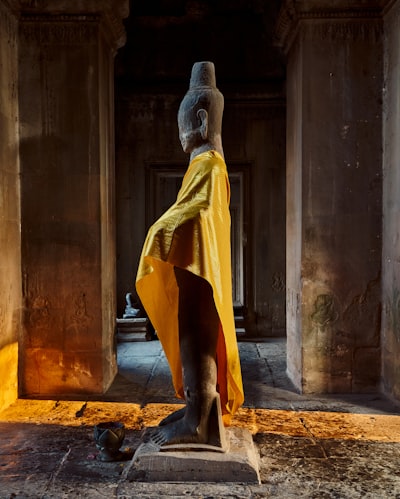
Angkor Wat Angkor Wat is the crown jewel of the Angkor Archaeological Park and one of the most iconic landmarks in Cambodia. This massive temple complex, built in the 12th century, is the largest religious monument in the world and a true masterpiece of Khmer architecture. Visitors can explore the intricate carvings, bas-reliefs, and towering spires that make Angkor Wat a true wonder of the ancient world. Bayon Temple The Bayon Temple is another must-visit attraction within the Angkor Archaeological Park. This temple is known for its serene and enigmatic faces carved into the stone towers, which have become one of the most recognizable symbols of Angkor. Visitors can wander through the maze-like corridors and admire the intricate bas-reliefs that depict daily life in the Khmer Empire. Ta Prohm Ta Prohm is a temple that has been left largely untouched, with the jungle reclaiming much of the site over the centuries. This creates a hauntingly beautiful and atmospheric setting, with massive tree roots and vines entwining with the ancient stone structures. Visitors can explore the crumbling ruins and imagine what the temple must have looked like in its heyday. Banteay Srei Banteay Srei is a smaller, but no less impressive, temple located outside the main Angkor complex. This 10th-century temple is renowned for its exquisite carvings and intricate decorations, which are considered some of the finest examples of Khmer art. Visitors can admire the delicate and intricate bas-reliefs that adorn the temple's walls. Preah Khan Preah Khan is a large temple complex that was once a center of learning and spirituality in the Khmer Empire. Visitors can explore the maze of corridors, courtyards, and shrines, and marvel at the impressive scale and complexity of the site. The temple is also known for its beautiful carvings and bas-reliefs. Neak Pean Neak Pean is a unique temple located on an artificial island in the middle of a large reservoir. The temple is known for its intricate design, which features a central tower surrounded by four smaller shrines. Visitors can walk across the causeway to the temple and admire the serene and reflective waters that surround it. Phnom Bakheng Phnom Bakheng is a temple-mountain that offers stunning views of the Angkor complex and the surrounding countryside. Visitors can climb to the top of the temple to enjoy panoramic vistas, especially at sunset when the light casts a warm glow over the ancient ruins. Beng Mealea Beng Mealea is a temple that has been left largely untouched, with the jungle reclaiming much of the site over the centuries. This creates a sense of adventure and exploration, as visitors can wander through the crumbling ruins and imagine what the temple must have looked like in its heyday. Kbal Spean Kbal Spean is a unique archaeological site located in the Cambodian jungle, where visitors can see intricate carvings of Hindu deities and animals carved into the riverbed. The site is known for its serene and peaceful atmosphere, and visitors can hike through the lush forest to reach the carved riverbed. Tonle Sap Lake While not technically part of the Angkor Archaeological Park, a visit to Tonle Sap Lake is a must-do for any traveler to Cambodia. This vast freshwater lake is home to a unique floating village, where residents live in houses built on stilts and rely on the lake's abundant fish for their livelihood. Visitors can take a boat tour of the lake and experience this unique way of life. In addition to these must-see attractions, there are many other temples, ruins, and cultural sites within the Angkor Archaeological Park that are worth exploring. Visitors can also enjoy the vibrant local markets, delicious Khmer cuisine, and warm hospitality of the Cambodian people.
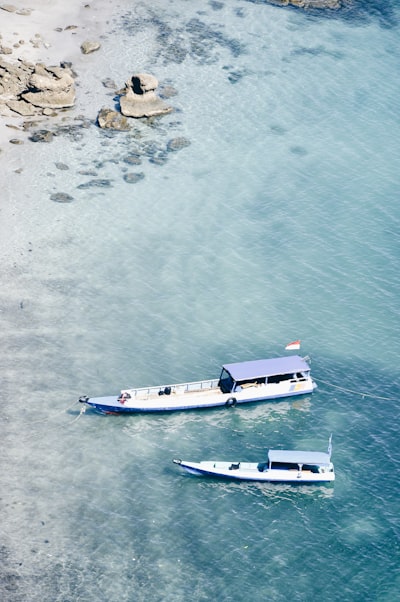
The Borobudur Temple Complex The Borobudur Temple Complex is the main attraction and the reason most visitors come to this destination. This massive 9th-century Buddhist temple is the largest Buddhist temple in the world and a UNESCO World Heritage Site. Visitors can explore the intricate carvings, statues, and stupas that make up this architectural masterpiece. The temple is arranged in a series of terraces, each representing a different stage of the Buddhist cosmological universe, and the journey to the top is a spiritual and meditative experience. The Sunrise at Borobudur Watching the sunrise over the Borobudur Temple is a truly breathtaking experience. Many visitors choose to arrive at the temple before dawn to witness the sun slowly rise over the ancient structure, casting a warm glow over the intricate carvings and statues. This is a popular activity, so it's recommended to arrive early to secure a good spot. The Lumbung Temple The Lumbung Temple is a smaller, less-visited temple located near the Borobudur Temple Complex. This 9th-century temple is known for its unique architectural style, which features a distinctive roof structure and intricate carvings. Visitors can explore the temple's interior and enjoy the peaceful atmosphere away from the crowds at the main temple. The Mendut Temple The Mendut Temple is another important Buddhist temple located near Borobudur. This 9th-century temple is known for its impressive central statue of the Buddha, which is one of the largest in Indonesia. Visitors can also explore the temple's intricate carvings and learn about the history and significance of this important religious site. The Pawon Temple The Pawon Temple is a smaller, less-visited temple located between Borobudur and Mendut. This 9th-century temple is known for its unique architectural style, which features a distinctive roof structure and intricate carvings. Visitors can explore the temple's interior and enjoy the peaceful atmosphere away from the crowds at the main temple. The Manohara Observatory The Manohara Observatory is a modern observation tower located near the Borobudur Temple Complex. Visitors can climb to the top of the tower for panoramic views of the temple and the surrounding landscape. This is a great spot to take in the scale and grandeur of the Borobudur Temple Complex. The Borobudur Archaeological Museum The Borobudur Archaeological Museum is a must-visit for anyone interested in the history and culture of Borobudur. The museum houses a collection of artifacts and exhibits that provide insight into the construction and significance of the Borobudur Temple Complex. Visitors can learn about the temple's history, the materials and techniques used in its construction, and the religious and cultural significance of the site. The Borobudur Sunrise Tour Many tour operators offer early morning tours of the Borobudur Temple Complex, allowing visitors to witness the stunning sunrise over the ancient structure. These tours often include transportation to the site, a guided tour of the temple, and the opportunity to watch the sun rise over the temple's iconic silhouette. The Borobudur Sunset Tour In addition to the sunrise tours, many tour operators also offer sunset tours of the Borobudur Temple Complex. These tours allow visitors to explore the temple in the golden light of the setting sun, capturing the temple's intricate carvings and statues in a warm, ethereal glow. The Borobudur Light and Sound Show The Borobudur Light and Sound Show is a unique and immersive experience that brings the history and significance of the Borobudur Temple Complex to life. The show features a combination of lighting, sound, and multimedia effects that tell the story of the temple's construction and the Buddhist teachings it represents.

The Kukulkan Pyramid: Also known as El Castillo, this iconic step-pyramid is the centerpiece of Chichen Itza. Standing at an impressive 79 feet tall, the Kukulkan Pyramid is a testament to the Mayan's advanced architectural and astronomical knowledge. Visitors can admire the intricate carvings and the remarkable design that allows the structure to cast a serpent-like shadow during the spring and fall equinoxes. The Great Ball Court: The largest ball court in Mesoamerica, this impressive structure measures 545 feet long and 231 feet wide. Visitors can explore the well-preserved playing field and marvel at the towering stone walls that once echoed the sounds of the ancient Mayan ball game, a ritual that held deep cultural and religious significance. The Temple of Warriors: This grand temple complex features an impressive array of carved columns and statues, depicting warriors, captives, and various Mayan deities. Visitors can wander through the intricate network of plazas, terraces, and smaller temples that make up this remarkable site. The El Caracol Observatory: This ancient astronomical observatory, with its unique circular design, showcases the Mayan's advanced understanding of the celestial movements. Visitors can learn about the Mayan's sophisticated calendar system and their ability to predict astronomical events with remarkable accuracy. The Sacred Cenote: This natural sinkhole, or cenote, was considered a sacred place by the Mayans, who believed it to be the entrance to the underworld. Visitors can explore the area and learn about the rituals and offerings that were once made to the gods in this revered location. The Temple of Jaguars: This temple, adorned with intricate carvings of jaguars, warriors, and other Mayan symbols, offers a glimpse into the rich cultural and religious beliefs of the ancient civilization. Visitors can admire the impressive architectural details and the well-preserved murals that adorn the walls. The Group of a Thousand Columns: This expansive area, once a bustling marketplace, features a vast array of columns and structures that showcase the Mayan's engineering prowess. Visitors can explore the ruins and imagine the vibrant commercial activities that once took place in this thriving hub. The Ossuary: Also known as the Tomb of the High Priest, this impressive structure was believed to be the final resting place of a revered Mayan leader. Visitors can learn about the burial practices and the significance of this sacred site within the Mayan culture. The Nunnery Quadrangle: This well-preserved complex of buildings, with its intricate carvings and architectural details, was likely used for administrative or religious purposes. Visitors can wander through the various structures and gain a deeper understanding of the Mayan's sophisticated societal organization. The Temple of the Bearded Man: This temple, with its unique carvings depicting a figure with a beard, is a subject of much debate among scholars. Visitors can explore the site and ponder the significance of this enigmatic figure within the Mayan pantheon. The Tzompantli: Also known as the "Wall of Skulls," this chilling structure was used for the display of the severed heads of sacrificial victims. Visitors can learn about the Mayan's complex religious practices and the role of human sacrifice in their rituals. The Mercado: This bustling marketplace, located just outside the main archaeological site, offers visitors the opportunity to immerse themselves in the vibrant local culture. Visitors can browse the stalls, haggle with vendors, and purchase a variety of traditional crafts, souvenirs, and local delicacies. By exploring these must-see attractions, visitors to Chichen Itza will gain a deeper appreciation for the rich history, advanced engineering, and captivating cultural traditions of the ancient Mayan civilization. This remarkable site offers a truly immersive and unforgettable travel experience.
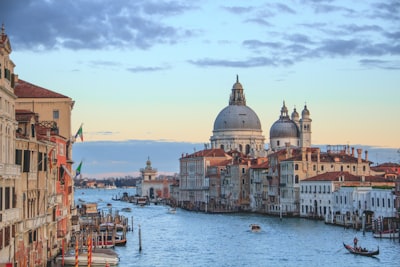
The Colosseum itself is the main draw, and visitors can explore the massive structure, which was once the site of gladiatorial contests, animal hunts, and public spectacles. Visitors can walk through the underground tunnels and chambers, known as the hypogeum, where the gladiators and animals were kept before their performances. The upper levels of the Colosseum offer stunning views of the arena and the surrounding city. The Roman Forum, located adjacent to the Colosseum, is another essential stop. This ancient center of Roman public life features the ruins of temples, basilicas, and other important buildings that were the heart of the Roman Empire. Visitors can wander through the Forum and imagine the bustling activity that once took place here. The Arch of Constantine, located just outside the Colosseum, is a triumphal arch that was erected in the 4th century AD to commemorate the victory of Constantine I over Maxentius. The arch is a stunning example of Roman architecture and features intricate carvings and reliefs. The Palatine Hill, one of the Seven Hills of Rome, is another must-see attraction. This historic site was the location of the palaces of the Roman emperors and offers breathtaking views of the Colosseum and the Roman Forum. Visitors can explore the ruins of the imperial palaces and learn about the daily lives of the Roman elite. The Baths of Caracalla, located a short distance from the Colosseum, are another impressive ancient Roman structure. These massive public baths were once the largest in the city and featured elaborate decorations, including mosaics and frescoes. The Trevi Fountain, one of the most famous fountains in the world, is a short walk from the Colosseum. Visitors can toss a coin into the fountain to ensure their return to Rome, and admire the stunning Baroque architecture and sculptures. Finally, the Vatican Museums, which house the Sistine Chapel and countless other priceless works of art, are a must-visit for any traveler to Rome. While not directly related to the Colosseum, the Vatican Museums offer a complementary cultural experience and a chance to see some of the world's most renowned artworks.
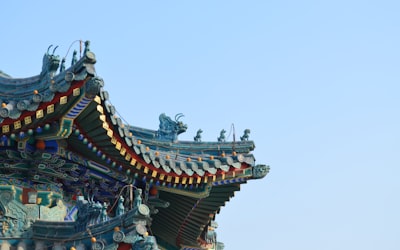
The Gate of Supreme Harmony (Taihe Men): This grand, imposing gate serves as the main entrance to the Forbidden City. Adorned with intricate carvings and stunning architecture, it sets the tone for the grandeur that awaits within. The Hall of Supreme Harmony (Taihe Dian): This is the largest and most important building in the Forbidden City, and it was the site of the most important imperial ceremonies and events. The hall's magnificent design, featuring a triple-eaved roof and a vast, open interior, is a testament to the power and wealth of the Ming and Qing dynasties. The Palace of Heavenly Purity (Qianqing Gong): This elegant palace was the private living quarters of the emperor and his family. Visitors can explore the well-preserved interiors and learn about the daily lives of the imperial household. The Treasure Gallery: Located within the Palace of Heavenly Purity, the Treasure Gallery houses an impressive collection of imperial artifacts, including rare books, paintings, calligraphy, and jade carvings. Visitors can marvel at the exquisite craftsmanship and the wealth of the imperial court. The Imperial Garden (Ningshou Gong): This serene garden, with its winding paths, pavilions, and ponds, provided a peaceful retreat for the emperors and their families. Visitors can stroll through the lush greenery and admire the traditional Chinese architecture. The Clock Exhibition Hall: This unique exhibition showcases a collection of antique clocks and timepieces from the imperial collection, offering a glimpse into the technological advancements and the refined tastes of the Qing dynasty. The Meridian Gate (Wumen): This grand, five-tiered gate was the main southern entrance to the Forbidden City and served as the primary access point for the emperor and his entourage. Visitors can admire the intricate carvings and the impressive scale of this architectural masterpiece. The Six Eastern Palaces: These six palaces, located on the eastern side of the Forbidden City, were the living quarters of the imperial concubines and their families. Visitors can explore the well-preserved interiors and learn about the complex social dynamics of the imperial household. The Six Western Palaces: Similar to the Six Eastern Palaces, these six palaces on the western side of the Forbidden City were the living quarters of the imperial princes and their families. Visitors can gain insights into the hierarchical structure of the imperial family. The Belvedere of Embodied Treasures (Baohe Dian): This elegant pavilion, located in the northern part of the Forbidden City, was used for the emperor's private study and meditation. Visitors can admire the intricate architectural details and the serene atmosphere of this tranquil space. The Pavilion of Literary Profundity (Wenhua Dian): This pavilion, situated in the northern part of the Forbidden City, was the site of the imperial examinations, where scholars competed for prestigious government positions. Visitors can learn about the importance of education and scholarship in traditional Chinese culture. The Ancestral Temples (Taimiao): These temples, located in the northern part of the Forbidden City, were used for ancestral worship and rituals. Visitors can gain insights into the religious and cultural practices of the imperial court. The Museum of the Forbidden City: This comprehensive museum, housed within the Forbidden City, showcases a vast collection of imperial artifacts, including paintings, calligraphy, ceramics, and jade carvings. Visitors can delve deeper into the rich history and cultural heritage of the Forbidden City. The Outer Court and the Inner Court: The Forbidden City is divided into two main sections, the Outer Court and the Inner Court. The Outer Court was the site of the emperor's public activities, while the Inner Court was the private domain of the imperial family. Visitors can explore both sections to gain a holistic understanding of the Forbidden City's complex layout and functions. With its stunning architecture, rich history, and vast collection of imperial treasures, the Forbidden City is a true gem of China's cultural heritage. A visit to this iconic landmark is sure to leave a lasting impression on any traveler.

Hagia Sophia Hagia Sophia is the crown jewel of Istanbul and one of the most iconic landmarks in the world. This magnificent Byzantine cathedral-turned-mosque-turned-museum is a true architectural masterpiece. Admire the stunning Byzantine mosaics, the towering domes, and the intricate marble work that adorn the interior. Climb to the upper galleries for breathtaking views over the main hall. Blue Mosque Just a short walk from Hagia Sophia, the Blue Mosque is another Istanbul icon. This 17th-century mosque is renowned for its beautiful blue İznik tiles that cover the interior walls. Marvel at the six slender minarets and the impressive central dome. Visitors can enter the mosque during non-prayer times, but be sure to dress modestly and remove your shoes. Topkapi Palace Topkapi Palace was the primary residence of the Ottoman sultans for almost 400 years. Explore the opulent courtyards, the lavish harem quarters, and the impressive treasury that houses the Spoonmaker's Diamond and other priceless artifacts. Don't miss the stunning views over the Bosphorus from the palace's terraces. Grand Bazaar No visit to Istanbul is complete without getting lost in the labyrinthine Grand Bazaar. This historic covered market is one of the largest and oldest in the world, with over 4,000 shops selling everything from carpets and ceramics to jewelry and spices. Haggle with the friendly vendors and soak up the vibrant atmosphere. Basilica Cistern Beneath the bustling streets of Istanbul lies the Basilica Cistern, a vast underground water reservoir dating back to the 6th century. Descend the marble staircase and marvel at the 336 columns that support the cavernous space. Keep an eye out for the famous Medusa heads that serve as column bases. Bosphorus Cruise Take a scenic cruise along the Bosphorus Strait, the waterway that separates Europe and Asia. Admire the stunning views of the city's historic skyline, the Bosphorus bridges, and the lavish Ottoman palaces that line the shores. Many tours also include stops at the Spice Bazaar and the Dolmabahçe Palace. Galata Tower Climb to the top of the iconic Galata Tower for panoramic views over the city. This medieval stone tower offers 360-degree vistas of the Golden Horn, the Bosphorus, and the historic neighborhoods of Istanbul. On a clear day, you can even see as far as the Princes' Islands. Süleymaniye Mosque Commissioned by the Ottoman Sultan Süleyman the Magnificent, this 16th-century mosque is one of the most impressive in Istanbul. Admire the elegant domes and minarets, the intricate calligraphy, and the stunning courtyard. Visitors can enter the mosque during non-prayer times. Dolmabahçe Palace Once the administrative center of the Ottoman Empire, Dolmabahçe Palace is a stunning example of 19th-century Ottoman architecture. Explore the opulent rooms and halls, adorned with Baccarat crystal chandeliers, Turkish carpets, and lavish furnishings. Don't miss the palace's beautiful gardens and the views over the Bosphorus.
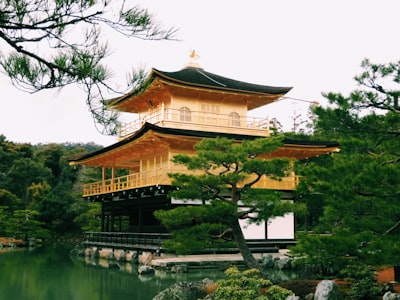
Kinkakuji Temple: The main attraction is the stunning three-story Golden Pavilion, which is covered in gold leaf and reflects beautifully in the pond surrounding it. Visitors can stroll through the serene gardens and admire the temple's architecture and the tranquil pond. Rokuonji Temple: This temple, also known as Kinkakuji, is the official name of the Kinkakuji Temple complex. Visitors can explore the various buildings and structures within the temple grounds, including the Hojo (abbot's quarters), the Sekkatei tea house, and the Anmintaku pond. Kinkakuji Gardens: The gardens surrounding the Golden Pavilion are a masterpiece of landscape design, featuring carefully manicured trees, shrubs, and a serene pond. Visitors can take a leisurely stroll through the gardens and enjoy the stunning views of the pavilion. Kitayama Mountains: The Kinkakuji Temple is situated at the base of the Kitayama Mountains, which offer breathtaking views of the surrounding landscape. Visitors can hike or take a cable car to the top of the mountains for panoramic vistas of Kyoto. Ryoanji Temple: While not directly part of the Kinkakuji Temple complex, the nearby Ryoanji Temple is another must-see attraction in Kyoto. This Zen temple is famous for its rock garden, which is considered one of the most famous and enigmatic gardens in Japan. Nijo Castle: Another iconic Kyoto landmark, Nijo Castle is a well-preserved feudal castle that features impressive architecture, including the Ninomaru Palace and the Ninomaru Guard House. Ginkakuji Temple: Also known as the Silver Pavilion, this temple is another stunning example of Zen architecture and gardens, offering a peaceful respite from the bustling city. By exploring these must-see attractions, travelers to Kinkakuji Temple will be able to immerse themselves in the rich history, culture, and natural beauty of Kyoto, Japan.

Machu Picchu Ruins: The primary attraction, Machu Picchu, is a breathtaking archaeological site that showcases the remarkable engineering and architectural prowess of the Inca civilization. Visitors can explore the well-preserved stone structures, including the Temple of the Sun, the Intihuatana Stone, and the Royal Quarters, while marveling at the stunning vistas of the surrounding mountains. Huayna Picchu: This iconic mountain, located directly behind Machu Picchu, offers a challenging hike with stunning views of the ruins and the Urubamba River below. The hike to the top of Huayna Picchu is a popular activity, but permits are limited, so it's essential to book in advance. Inca Trail: The Inca Trail is a renowned multi-day hiking route that leads to Machu Picchu, passing through stunning Andean landscapes, ancient Inca ruins, and cloud forests. The classic Inca Trail trek takes four days, but there are also shorter options available for those with less time. Machu Picchu Mountain: For those seeking a less crowded alternative to Huayna Picchu, Machu Picchu Mountain offers a challenging hike with equally breathtaking views of the ruins and the surrounding landscape. Intipunku (Sun Gate): The Sun Gate, located at the end of the Inca Trail, provides a dramatic entrance to Machu Picchu and offers a stunning panoramic view of the entire site. Inca Bridge: This engineering marvel, located along the Inca Trail, is a narrow stone bridge that was once part of the Inca road system and provided access to Machu Picchu. Putukusi Mountain: This mountain, situated across the Urubamba River from Machu Picchu, offers a challenging hike with rewarding views of the ruins and the surrounding peaks. Llactapata: This Inca ruin, located along the Inca Trail, provides a unique perspective on Machu Picchu and the surrounding landscape. Aguas Calientes: Also known as Machu Picchu Pueblo, this lively town at the base of Machu Picchu serves as the gateway to the ruins and offers a variety of restaurants, markets, and accommodations for visitors. Museo de Sitio Manuel Chávez Ballón: This on-site museum in Aguas Calientes provides valuable information and exhibits about the history, culture, and archaeology of Machu Picchu.











Hagia Sophia Hagia Sophia is the crown jewel of Istanbul and one of the most iconic landmarks in the world. This magnificent Byzantine cathedral-turned-mosque-turned-museum is a true architectural masterpiece. Admire the stunning Byzantine mosaics, the towering domes, and the intricate marble work that adorn the interior. Climb to the upper galleries for breathtaking views over the main hall. Blue Mosque Just a short walk from Hagia Sophia, the Blue Mosque is another Istanbul icon. This 17th-century mosque is renowned for its beautiful blue İznik tiles that cover the interior walls. Marvel at the six slender minarets and the impressive central dome. Visitors can enter the mosque during non-prayer times, but be sure to dress modestly and remove your shoes. Topkapi Palace Topkapi Palace was the primary residence of the Ottoman sultans for almost 400 years. Explore the opulent courtyards, the lavish harem quarters, and the impressive treasury that houses the Spoonmaker's Diamond and other priceless artifacts. Don't miss the stunning views over the Bosphorus from the palace's terraces. Grand Bazaar No visit to Istanbul is complete without getting lost in the labyrinthine Grand Bazaar. This historic covered market is one of the largest and oldest in the world, with over 4,000 shops selling everything from carpets and ceramics to jewelry and spices. Haggle with the friendly vendors and soak up the vibrant atmosphere. Basilica Cistern Beneath the bustling streets of Istanbul lies the Basilica Cistern, a vast underground water reservoir dating back to the 6th century. Descend the marble staircase and marvel at the 336 columns that support the cavernous space. Keep an eye out for the famous Medusa heads that serve as column bases. Bosphorus Cruise Take a scenic cruise along the Bosphorus Strait, the waterway that separates Europe and Asia. Admire the stunning views of the city's historic skyline, the Bosphorus bridges, and the lavish Ottoman palaces that line the shores. Many tours also include stops at the Spice Bazaar and the Dolmabahçe Palace. Galata Tower Climb to the top of the iconic Galata Tower for panoramic views over the city. This medieval stone tower offers 360-degree vistas of the Golden Horn, the Bosphorus, and the historic neighborhoods of Istanbul. On a clear day, you can even see as far as the Princes' Islands. Süleymaniye Mosque Commissioned by the Ottoman Sultan Süleyman the Magnificent, this 16th-century mosque is one of the most impressive in Istanbul. Admire the elegant domes and minarets, the intricate calligraphy, and the stunning courtyard. Visitors can enter the mosque during non-prayer times. Dolmabahçe Palace Once the administrative center of the Ottoman Empire, Dolmabahçe Palace is a stunning example of 19th-century Ottoman architecture. Explore the opulent rooms and halls, adorned with Baccarat crystal chandeliers, Turkish carpets, and lavish furnishings. Don't miss the palace's beautiful gardens and the views over the Bosphorus.

The White Palace: The White Palace, also known as the "Potrang Karpo," is the administrative center of the Potala Palace. It houses the former living quarters of the Dalai Lamas, including the audience hall, the Dalai Lama's private chambers, and the Dalai Lama's throne room. The Red Palace: The Red Palace, or "Potrang Marpo," is the spiritual heart of the Potala Palace. It contains numerous chapels, shrines, and the tombs of past Dalai Lamas. Visitors can explore the intricate murals, thangka paintings, and the impressive collection of Buddhist artifacts. The Jokhang Temple: Located within the Potala Palace complex, the Jokhang Temple is considered the spiritual heart of Tibet. This UNESCO World Heritage Site is a stunning example of Tibetan Buddhist architecture, blending Nepalese, Tibetan, and Indian influences. Visitors can witness the daily rituals and practices of Tibetan Buddhists. The Lingkhor Kora: The Lingkhor Kora is a sacred pilgrimage route that circles the Potala Palace. Pilgrims and visitors can walk this path, which offers breathtaking views of the palace and the surrounding landscape. The Norbulingka: The Norbulingka, or "Jewel Park," was the summer palace of the Dalai Lamas. This serene and picturesque garden complex features ornate buildings, pavilions, and lush greenery, providing a peaceful respite from the hustle and bustle of the city. The Sera Monastery: Although not located within the Potala Palace complex, the Sera Monastery is a must-visit attraction for those interested in Tibetan Buddhism. This renowned monastery is known for its lively debates among the monks, which visitors can witness. The Drepung Monastery: Another important Tibetan Buddhist monastery, the Drepung Monastery was once the largest in the world, with over 10,000 monks. Visitors can explore the intricate architecture, murals, and the impressive collection of Buddhist artifacts. The Barkhor Street: The Barkhor Street is a bustling, circular street surrounding the Jokhang Temple. This vibrant market area offers a glimpse into the daily life of Tibetans, with vendors selling traditional handicrafts, religious items, and local delicacies. The Potala Palace Museum: The Potala Palace Museum showcases a vast collection of Tibetan artifacts, including thangka paintings, sculptures, and religious relics. Visitors can learn about the history and cultural significance of these treasures. The Kora Pilgrimage: Many visitors choose to undertake the Kora pilgrimage, a circumambulation of the Potala Palace. This spiritual practice is an important part of Tibetan Buddhist tradition and offers a unique opportunity to connect with the sacred landscape.

One of the must-see attractions within the Sagrada Familia complex is the Nativity Façade, which showcases Gaudí's intricate and detailed craftsmanship. This façade, dedicated to the birth of Jesus, is adorned with intricate sculptures and carvings that depict biblical scenes and symbolism. Another must-see attraction is the Passion Façade, which represents the suffering and crucifixion of Jesus. This façade, with its stark and angular design, is a powerful contrast to the ornate Nativity Façade and offers a unique perspective on Gaudí's artistic vision. The interior of the Sagrada Familia is equally impressive, with its soaring columns and vaulted ceilings that create a sense of awe and wonder. Visitors can explore the various chapels and altars, each with its own distinct architectural features and religious symbolism. One of the most popular attractions within the Sagrada Familia is the opportunity to climb to the top of the cathedral's towers. From the top, visitors can enjoy breathtaking views of Barcelona and the surrounding landscape, providing a unique perspective on this architectural masterpiece. In addition to the cathedral itself, the Sagrada Familia complex also includes a museum that showcases Gaudí's life and work, as well as the history and construction of the cathedral. Visitors can explore interactive exhibits and learn more about the intricate details and symbolism that are woven throughout the building. Overall, the Sagrada Familia is a must-see attraction for any traveler to Spain, offering a unique and unforgettable experience that showcases the genius of Antoni Gaudí and the rich cultural heritage of Barcelona.

The Nasrid Palaces are the crown jewel of the Alhambra, featuring intricate Islamic architecture, ornate carvings, and beautiful courtyards. Highlights include the Patio of the Lions, the Hall of the Abencerrages, and the Sala de los Reyes (Hall of the Kings). The Generalife is the summer palace of the Nasrid rulers, known for its lush gardens, serene fountains, and stunning views of the Alhambra. Visitors can stroll through the Patio de la Acequia, a tranquil water garden, and the Jardín de la Sultana, a beautiful terraced garden. The Alcazaba is the oldest part of the Alhambra, dating back to the 11th century. Visitors can climb to the top of the towers for panoramic views of Granada and the surrounding Sierra Nevada mountains. The Palace of Charles V is a Renaissance-style palace built in the 16th century, featuring a circular courtyard and impressive architecture that contrasts with the Moorish style of the rest of the Alhambra. The Alhambra Museum houses a collection of artifacts and exhibits that provide insight into the history and culture of the Alhambra, including ceramics, textiles, and manuscripts. The Baths of the Alhambra are a well-preserved example of Moorish bathing facilities, with intricate tile work and architectural details that offer a glimpse into the daily life of the Nasrid rulers. The Partal is a residential area of the Alhambra, featuring the remains of palatial structures and gardens that were once part of the complex. In addition to the Alhambra itself, visitors to Granada should also explore the historic Albaicín neighborhood, a UNESCO World Heritage site known for its winding streets, whitewashed houses, and stunning views of the Alhambra.

Machu Picchu Ruins: The primary attraction, Machu Picchu, is a breathtaking archaeological site that showcases the remarkable engineering and architectural prowess of the Inca civilization. Visitors can explore the well-preserved stone structures, including the Temple of the Sun, the Intihuatana Stone, and the Royal Quarters, while marveling at the stunning vistas of the surrounding mountains. Huayna Picchu: This iconic mountain, located directly behind Machu Picchu, offers a challenging hike with stunning views of the ruins and the Urubamba River below. The hike to the top of Huayna Picchu is a popular activity, but permits are limited, so it's essential to book in advance. Inca Trail: The Inca Trail is a renowned multi-day hiking route that leads to Machu Picchu, passing through stunning Andean landscapes, ancient Inca ruins, and cloud forests. The classic Inca Trail trek takes four days, but there are also shorter options available for those with less time. Machu Picchu Mountain: For those seeking a less crowded alternative to Huayna Picchu, Machu Picchu Mountain offers a challenging hike with equally breathtaking views of the ruins and the surrounding landscape. Intipunku (Sun Gate): The Sun Gate, located at the end of the Inca Trail, provides a dramatic entrance to Machu Picchu and offers a stunning panoramic view of the entire site. Inca Bridge: This engineering marvel, located along the Inca Trail, is a narrow stone bridge that was once part of the Inca road system and provided access to Machu Picchu. Putukusi Mountain: This mountain, situated across the Urubamba River from Machu Picchu, offers a challenging hike with rewarding views of the ruins and the surrounding peaks. Llactapata: This Inca ruin, located along the Inca Trail, provides a unique perspective on Machu Picchu and the surrounding landscape. Aguas Calientes: Also known as Machu Picchu Pueblo, this lively town at the base of Machu Picchu serves as the gateway to the ruins and offers a variety of restaurants, markets, and accommodations for visitors. Museo de Sitio Manuel Chávez Ballón: This on-site museum in Aguas Calientes provides valuable information and exhibits about the history, culture, and archaeology of Machu Picchu.

The Great Bath: This remarkable structure, considered one of the earliest public baths in the ancient world, is a testament to the advanced engineering and urban planning of the Indus Valley Civilization. The Great Bath, measuring 12 meters by 7 meters, was likely used for ritual bathing or religious ceremonies. The Granary: This large, well-preserved structure was likely used for the storage and distribution of grains and other agricultural products. The Granary's impressive size and sophisticated design showcase the organizational and administrative capabilities of the Indus Valley people. The Citadel: Situated on a raised platform, the Citadel was the administrative and religious center of Mohenjo-daro. This area includes the remains of several important buildings, including a large public bath and a series of interconnected rooms that may have served as a palace or administrative complex. The Stupa: The Stupa, a large mound-like structure, is believed to have been a Buddhist monument built long after the decline of the Indus Valley Civilization. This site offers visitors a glimpse into the later history and cultural influences that shaped the region. The Artifact Museum: The Mohenjo-daro Artifact Museum houses a remarkable collection of artifacts and relics unearthed from the archaeological site. Visitors can explore a wide range of objects, including pottery, seals, jewelry, and tools, providing a deeper understanding of the daily life and cultural practices of the Indus Valley people. The Drainage System: Mohenjo-daro's advanced drainage system, with its intricate network of brick-lined drains and sewers, is a testament to the engineering prowess of the Indus Valley Civilization. Visitors can marvel at the sophistication of this ancient infrastructure, which was designed to manage the site's water supply and waste disposal. The Residential Areas: Exploring the well-planned residential areas of Mohenjo-daro, with their grid-like layout and standardized brick houses, offers insights into the urban planning and social organization of this ancient civilization. By immersing themselves in the rich history and archaeological wonders of Mohenjo-daro, visitors can gain a deeper appreciation for the remarkable achievements of the Indus Valley Civilization and its lasting impact on the region.

1. Milford Sound: Explore this stunning fiord, surrounded by towering cliffs, cascading waterfalls, and lush rainforests. Take a scenic cruise or kayak through the serene waters and spot wildlife such as seals, dolphins, and penguins. 2. Tongariro National Park: Hike the famous Tongariro Alpine Crossing, a challenging but rewarding trail that takes you through a volcanic landscape with stunning views of Mount Ngauruhoe and Mount Ruapehu. 3. Waitomo Caves: Venture underground to witness the mesmerizing glowworm caves, where thousands of tiny bioluminescent creatures create a magical, starry display. You can also explore the caves by boat, black water rafting, or abseiling. 4. Queenstown: Known as the "Adventure Capital of the World," Queenstown offers a wide range of thrilling activities, from bungee jumping and skydiving to jet boating and skiing. Enjoy the stunning scenery of Lake Wakatipu and the surrounding mountains. 5. Franz Josef and Fox Glaciers: Hike or take a helicopter tour to explore these magnificent glaciers, which are slowly retreating due to climate change. Marvel at the stunning blue ice formations and learn about the glacial processes. 6. Rotorua: Immerse yourself in Maori culture and witness the geothermal wonders of Rotorua. Visit Whakarewarewa, a living Maori village, and explore the bubbling mud pools, hot springs, and geysers at Waimangu Volcanic Valley. 7. Abel Tasman National Park: Hike, kayak, or take a boat tour through this stunning coastal park, known for its golden sand beaches, crystal-clear waters, and lush native forests. 8. Aoraki/Mount Cook National Park: Gaze upon the majestic Aoraki/Mount Cook, the highest mountain in New Zealand, and explore the surrounding glaciers, alpine lakes, and hiking trails. 9. Waiheke Island: Just a short ferry ride from Auckland, Waiheke Island is a haven for wine lovers, with numerous vineyards and wineries offering tastings and stunning views. 10. Napier Art Deco: Explore the beautifully preserved Art Deco architecture in the city of Napier, which was rebuilt in the 1930s after a devastating earthquake. 11. Kaikoura: Witness the incredible marine life of Kaikoura, including whales, dolphins, seals, and seabirds. Take a whale-watching tour or go swimming with the playful dusky dolphins. 12. Hobbiton Movie Set: Step into the enchanting world of The Lord of the Rings and The Hobbit films by visiting the Hobbiton Movie Set, where you can explore the iconic Hobbit holes and the lush, rolling hills of the Shire. These are just a few of the many must-see attractions that New Zealand has to offer. With its stunning natural landscapes, rich cultural heritage, and endless adventure opportunities, New Zealand is a truly remarkable destination that will leave you in awe.

The Pyramid of the Sun is the largest and most impressive structure at Teotihuacan, standing at an impressive 216 feet (66 meters) tall. Visitors can climb to the top of this massive pyramid, offering breathtaking views of the entire archaeological site. The Pyramid of the Moon, while slightly smaller, is equally impressive and provides a stunning backdrop to the Avenue of the Dead, the main thoroughfare of the ancient city. The Avenue of the Dead is a must-see attraction, stretching for over a mile and lined with numerous smaller temples, pyramids, and residential complexes. As you walk along the avenue, you'll be transported back in time, imagining the bustling activity that once filled this ancient city. The Temple of Quetzalcoatl, also known as the Feathered Serpent Pyramid, is another highlight of Teotihuacan. This temple is adorned with intricate carvings and sculptures depicting the feathered serpent deity, a symbol of great importance in Mesoamerican cultures. The Citadel, a massive complex that served as the political and religious center of Teotihuacan, is another must-see attraction. Within the Citadel, visitors can explore the impressive Temple of Quetzalcoatl, as well as the smaller temples and plazas that surrounded it. The Museo de Sitio, or on-site museum, is an excellent resource for learning more about the history and culture of Teotihuacan. The museum houses a vast collection of artifacts, including sculptures, pottery, and murals, that provide insight into the daily life and beliefs of the ancient inhabitants of the city. In addition to the archaeological sites, Teotihuacan also offers a variety of other activities and experiences for visitors. The nearby town of San Juan Teotihuacan is home to a vibrant market, where you can find a wide range of traditional Mexican crafts, textiles, and cuisine. For those interested in experiencing the spiritual and mystical aspects of Teotihuacan, there are numerous guided tours and ceremonies available, such as sunrise ceremonies at the Pyramid of the Sun or temazcal (traditional sweat lodge) rituals. Overall, the Pyramids of Teotihuacan are a truly remarkable and awe-inspiring destination, offering a glimpse into the rich history and culture of ancient Mesoamerica. Whether you're interested in archaeology, history, or simply soaking in the breathtaking scenery, a visit to Teotihuacan is sure to be a highlight of any trip to Mexico.

The Kukulkan Pyramid: Also known as El Castillo, this iconic step-pyramid is the centerpiece of Chichen Itza. Standing at an impressive 79 feet tall, the Kukulkan Pyramid is a testament to the Mayan's advanced architectural and astronomical knowledge. Visitors can admire the intricate carvings and the remarkable design that allows the structure to cast a serpent-like shadow during the spring and fall equinoxes. The Great Ball Court: The largest ball court in Mesoamerica, this impressive structure measures 545 feet long and 231 feet wide. Visitors can explore the well-preserved playing field and marvel at the towering stone walls that once echoed the sounds of the ancient Mayan ball game, a ritual that held deep cultural and religious significance. The Temple of Warriors: This grand temple complex features an impressive array of carved columns and statues, depicting warriors, captives, and various Mayan deities. Visitors can wander through the intricate network of plazas, terraces, and smaller temples that make up this remarkable site. The El Caracol Observatory: This ancient astronomical observatory, with its unique circular design, showcases the Mayan's advanced understanding of the celestial movements. Visitors can learn about the Mayan's sophisticated calendar system and their ability to predict astronomical events with remarkable accuracy. The Sacred Cenote: This natural sinkhole, or cenote, was considered a sacred place by the Mayans, who believed it to be the entrance to the underworld. Visitors can explore the area and learn about the rituals and offerings that were once made to the gods in this revered location. The Temple of Jaguars: This temple, adorned with intricate carvings of jaguars, warriors, and other Mayan symbols, offers a glimpse into the rich cultural and religious beliefs of the ancient civilization. Visitors can admire the impressive architectural details and the well-preserved murals that adorn the walls. The Group of a Thousand Columns: This expansive area, once a bustling marketplace, features a vast array of columns and structures that showcase the Mayan's engineering prowess. Visitors can explore the ruins and imagine the vibrant commercial activities that once took place in this thriving hub. The Ossuary: Also known as the Tomb of the High Priest, this impressive structure was believed to be the final resting place of a revered Mayan leader. Visitors can learn about the burial practices and the significance of this sacred site within the Mayan culture. The Nunnery Quadrangle: This well-preserved complex of buildings, with its intricate carvings and architectural details, was likely used for administrative or religious purposes. Visitors can wander through the various structures and gain a deeper understanding of the Mayan's sophisticated societal organization. The Temple of the Bearded Man: This temple, with its unique carvings depicting a figure with a beard, is a subject of much debate among scholars. Visitors can explore the site and ponder the significance of this enigmatic figure within the Mayan pantheon. The Tzompantli: Also known as the "Wall of Skulls," this chilling structure was used for the display of the severed heads of sacrificial victims. Visitors can learn about the Mayan's complex religious practices and the role of human sacrifice in their rituals. The Mercado: This bustling marketplace, located just outside the main archaeological site, offers visitors the opportunity to immerse themselves in the vibrant local culture. Visitors can browse the stalls, haggle with vendors, and purchase a variety of traditional crafts, souvenirs, and local delicacies. By exploring these must-see attractions, visitors to Chichen Itza will gain a deeper appreciation for the rich history, advanced engineering, and captivating cultural traditions of the ancient Mayan civilization. This remarkable site offers a truly immersive and unforgettable travel experience.

The Siq: The Siq is the main entrance to Petra, a narrow gorge that stretches for over a kilometer. This dramatic natural passage, with its towering sandstone walls, sets the stage for the stunning architectural wonders that lie ahead. The Treasury (Al-Khazneh): The iconic Treasury is the most famous and recognizable landmark of Petra. This elaborate, ornate temple, carved directly into the rock face, is a testament to the skill and artistry of the Nabataean people. The Monastery (Al-Deir): One of the largest monuments in Petra, the Monastery is a massive, temple-like structure carved into the mountainside. Visitors can climb the 800 steps to reach this impressive site and enjoy the stunning views from the top. The Street of Facades: As you wander through Petra, you'll be greeted by the Street of Facades, a long, narrow gorge lined with elaborately carved temple facades and tombs. The Royal Tombs: Petra is home to several impressive royal tombs, including the Urn Tomb, the Corinthian Tomb, and the Palace Tomb. These grand, ornate structures offer a glimpse into the wealth and power of Petra's ancient rulers. The High Place of Sacrifice: This ancient ritual site, located high above the city, offers panoramic views of Petra and the surrounding landscape. Visitors can explore the remains of the sacrificial altars and enjoy the serene, spiritual atmosphere. The Petra Church: Discovered in the 1990s, the Petra Church is a well-preserved Byzantine-era church that features stunning mosaics and frescoes. The Beidha: Also known as "Little Petra," the Beidha is a smaller, less crowded version of the main Petra site, with its own set of carved rock formations and ancient ruins. The Petra Visitor Center: Before exploring Petra, be sure to visit the Petra Visitor Center, which offers informative exhibits and displays about the history and culture of the ancient city. The Petra Night Show: For a truly magical experience, consider attending the Petra Night Show, where the Treasury is illuminated by thousands of candles, creating a mesmerizing and unforgettable atmosphere. In addition to these must-see attractions, Petra offers a wealth of hiking opportunities, from the challenging Monastery Trail to the more leisurely Siq Trail. Visitors can also explore the surrounding desert landscape, visit local Bedouin communities, and immerse themselves in the rich cultural heritage of this remarkable destination.




